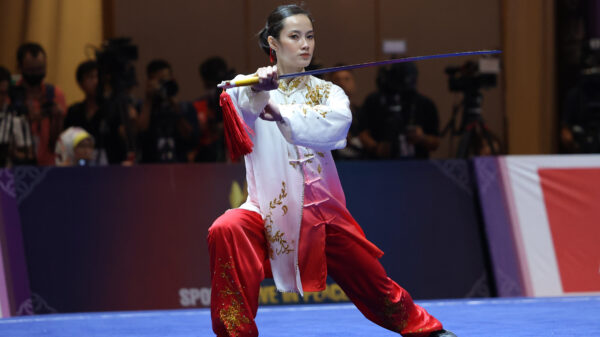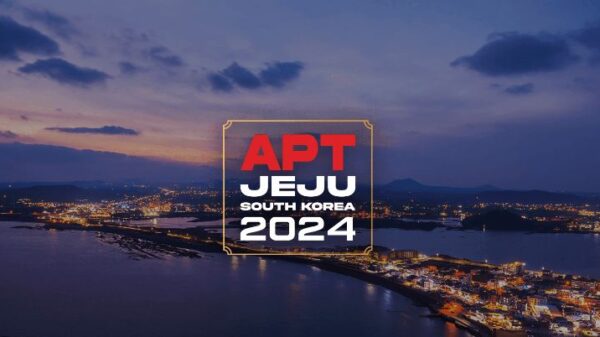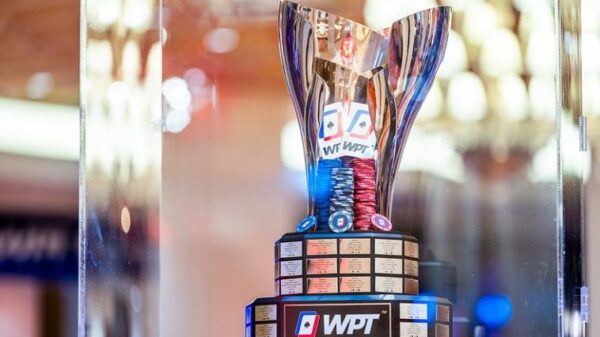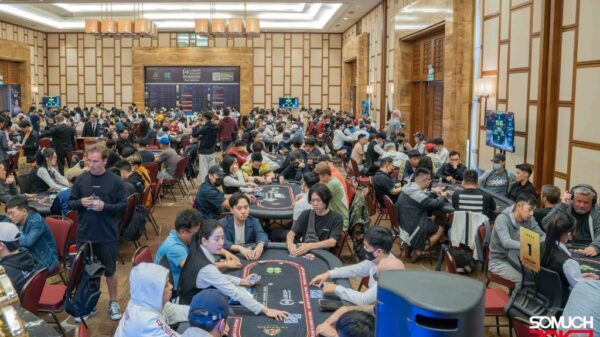With launches left and right and an overload of shiny automobile displays, it’s easy to get lost in the din of the Manila International Auto Show (MIAS) revelry over the weekend.
The DAILY TRIBUNE Blast started at the World Trade Center (WTC) front of the MIAS 2024. Greeting you there, in broad daylight, are displays from the likes of BAIC, Hyundai, Astara and Nissan, among others.
They are parked around the small area where showgoers test-drove their vehicles of choice, complete with steel ramp and cones.
Now that was the day temperatures reached 50 degrees in some places in the country. Easily, it felt like that on that spot around 1 p.m., but people didn’t mind.
Clearly, the crowd’s anticipation of the yearly event exceeded the threat of heat stroke. At least during Day 1.
Just before you get indoors, the vintage cars are on display lining up the entire WTC lobby teeming with sales people, aficionados, media and the likes.

WHO would dare drive this beauty, Jaecoo7, into the rough?
It took us hours to navigate through the cavernous venue not only because human traffic was at standstill but you’d want to spend a few moments to appreciate each and every booth.
And when we say booth, it’s a 100-square-meter space — decked by cars and decorated by specific themes.
Then later in the afternoon we decided to check out the other venue, the SMX Convention Center. This, by the way, marked the first time since MIAS’ inception in 2005 that it was held at two sites.
So, we hopped on the shuttle buses, provided free for show-goers, to the next venue which was smaller compared to the other but was just as decked.
These in a nutshell were what we saw.
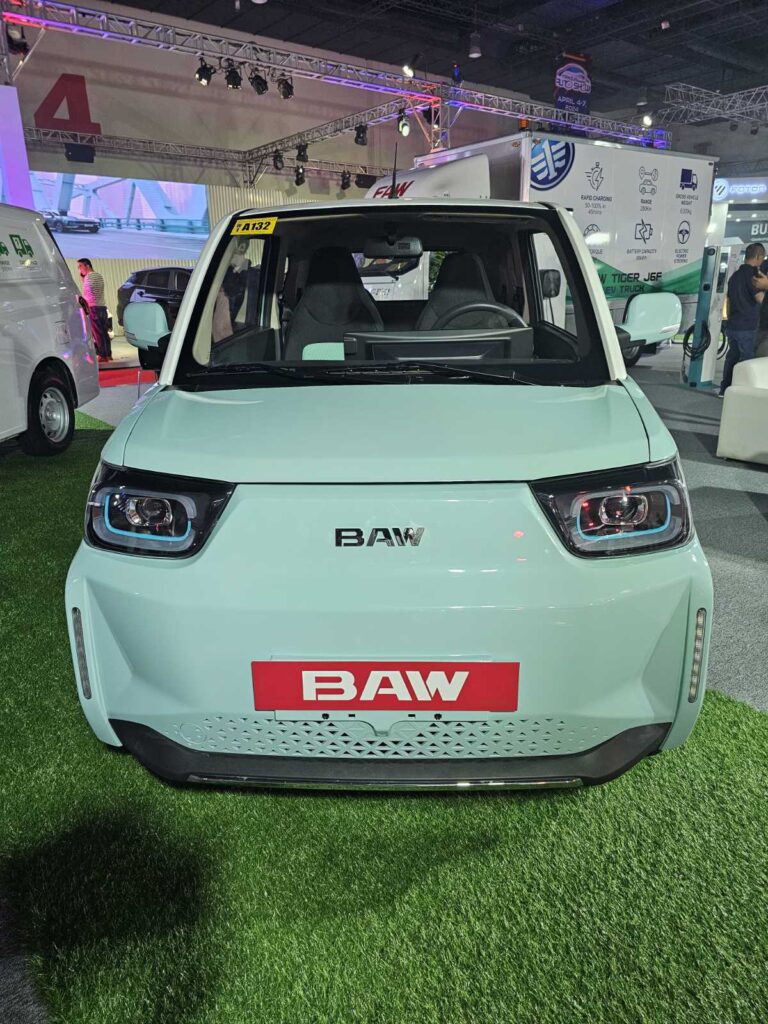
THIS Pony can gallop harder beyond its cute looks.
Say hi to Hycan
More than half of the 29 car brands putting on a show in the four-day meet were Chinese brands.
Quite of few of them was just beginning to carve its niche on the local auto industry. Like the Hycan.
It is primarily an electric vehicle brand borne of the partnership between GAC and Nio New Energy five years ago.
Off-hand, the ZO3 would catch your attention. The compact crossover has sleek, flowing appearance and an attractive 18-inch wheels on a 2,750-millimeter base.
There is a 10.25-inch screen for instrument console and a 14.6-inch infotainment panel. It is adorned by a panoramic skylight that hides the modest measurements of 4,602 mm long, 1,900mm wide, and 1,645 tall.
The five-seater offers spacious cargo room and trunk space and gives the driver ultrasonic radars, 360-degree camera view and a parking assist.
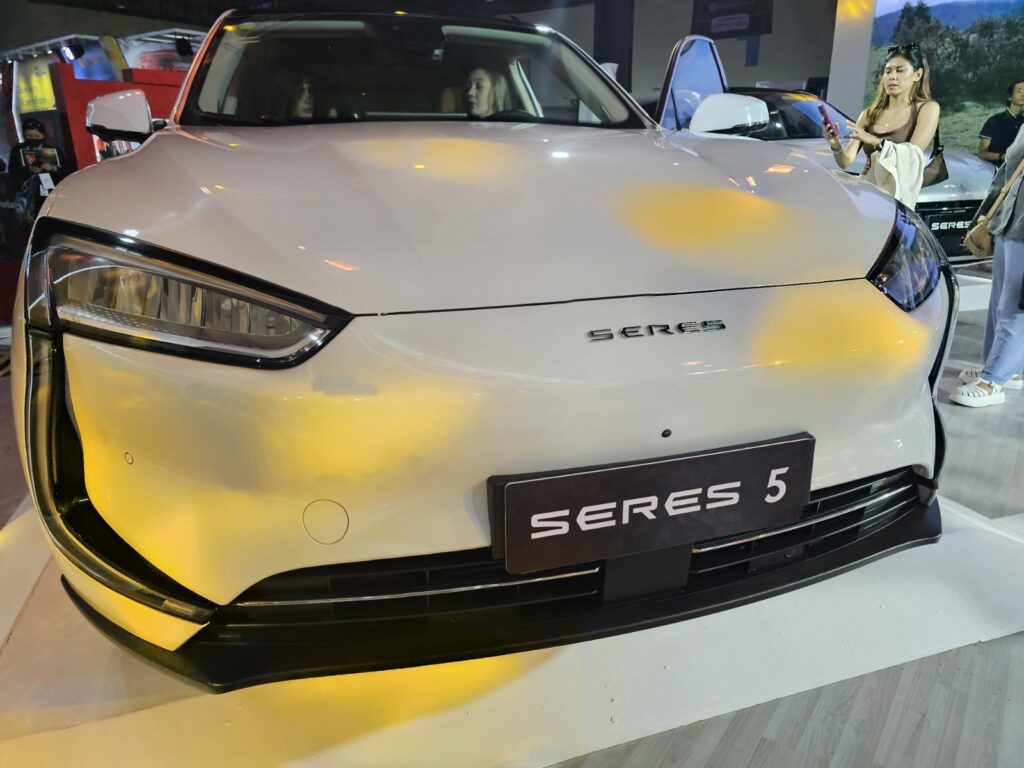
MUTED façade of Seres 5.
The ZO3 is powered by a permanent magnet synchronous motor that belts out 135 kilowatt-hour for a 184 horsepower. Torque is 225 newton-meter which could propel from zero to 100 in less than eight.
Battery pack can reach 510 kilometers in one charge and recharges from30 percent to 80 percent in just a little over 10 hours. Price starts at P1.688 million.
Hycan’s A06 Plus is a shapely, luxurious offering with LED lightings and elegant 18-inch rims. Climate controls, among others, are found on the 14.6-inch screen.
It is powered by a 160kW (218hp) permanent magnet synchronous motor in front and has a driving range of 520 kilometers in one go. It goes for P1.788 million.
The V09 van also share the stylish DNA with lighted emblem in between chrome-trimmed front bumper. The price tag: P3.788 million.
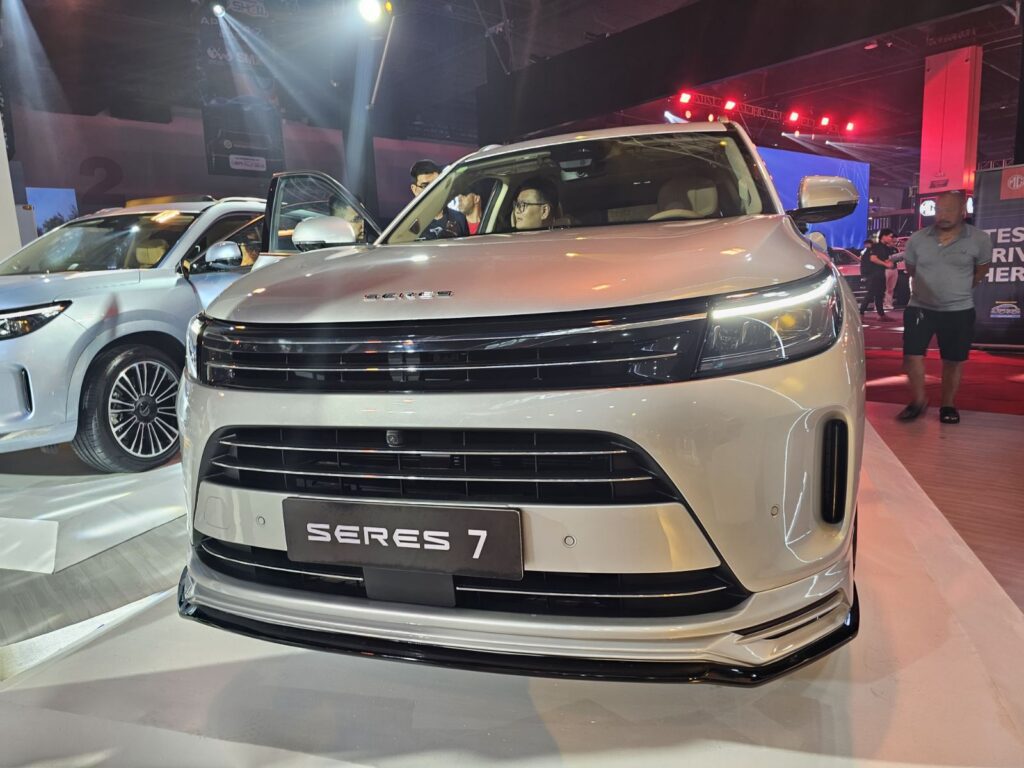
THE big brother of the Seres brood, Seres 7.
Seres of fortunate events
Another newcomer is yet another Chinese maker Seres.
It has a lineup that ranges from battery-electric, plug-in hybrid and extended-range electric. Of the three, the BEV runs solely on battery which powers its motor.
A compact crossover, the Seres 5 has BEV and EREV. Its top-of-the-line model, Seres 5SF, can run 430 km on single charge and zooms 0 to 100 in 3.7.
The bigger Seres 7 is the full-sized crossover and an EREV. Power comes from a 1.5-liter turbo-gasoline engine with 114 hp and 190 Nm.
The Seres E5 PHEV runs on either gas engine or electric motor. The midsize crossover has battery power of 17.52kWh that can run for 87km on single plug in.
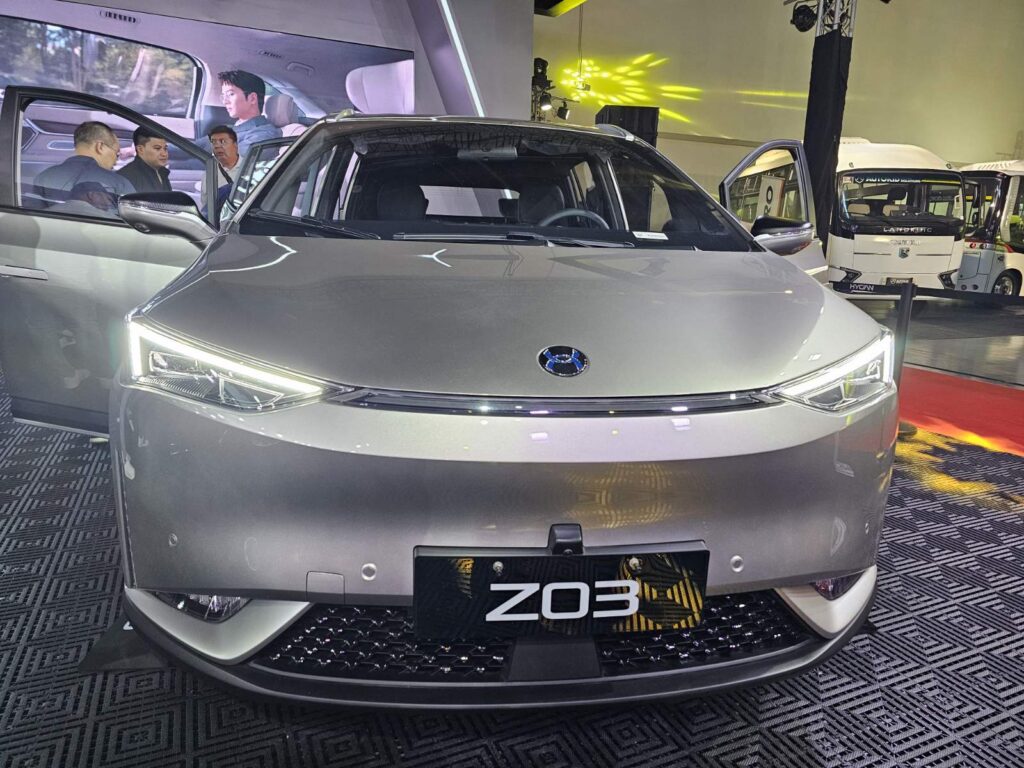
LINES define the beauty of Hycan ZO3.
Hello Hongqi
With crossover sedans and a van under its belt, Hongqi hopes to take a share of the market for people looking for EVs.
It put out the E-HS9 and HS-5 out there. But the one they launched was the supposedly entry-level HS-3.
The runt of the litter in terms of size, HS-3 stands it ground with regard to looks and capability. At 4.6 meters long it is considered a subcompact just below the HS-5.
Yet in the appearance, the Hongqi HS-3 is pleasing to the eyes with its imposing headlights and grilles. A tablet of a console is inside with soft and smooth dashboard and leather-trimmed seats.
It has driver-assist system, autonomous braking, lane-keep and blind-spot detection. It’s powered by a 1.5-liter turbo engine, producing 168hp and 258Nm of torque on a seven-speed dual-clutch transmission.
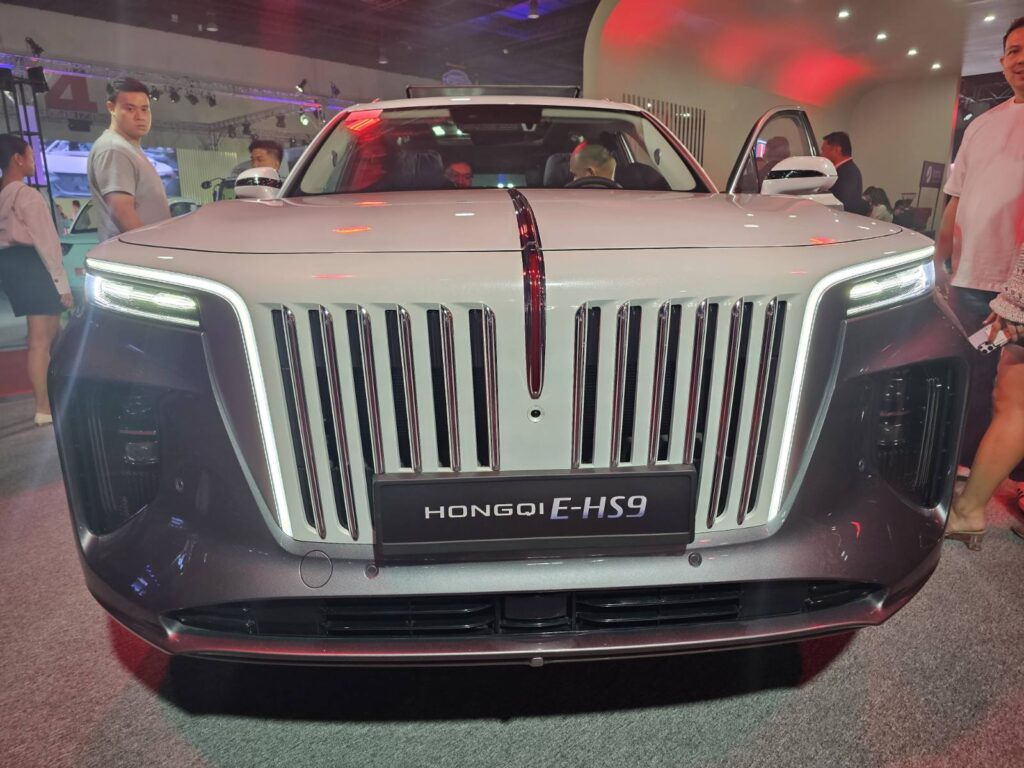
STRONG curb appeal by the Hongqi E-HS9.
Hi-ho Jaecoo
Omoda and Jaecoo are also Chinese brands which brought out all they’ve got during the MIAS 2024.
Among them are the smart e-sport utility vehicle Omoda 5, the upscale Jaecoo J7 SUV and the luxury vehicle J8 which was supposed to be an off-road ride only if you’re willing to drag that beauty into dirt.
Omoda and Jaecoo has with eight major branches and five research and development centers worldwide which has a strict production system that could rival other luxury brands.
The company, taken as one, has a customer to manufacturer core-based process that takes utmost care of the owner’s satisfaction with an annual production capacity of 300,000 units and 200,000 automotive components.
They hope to bring into the Philippines that pedigree, something that is hardly offered these days despite the influx of new car brands.
Omoda and Jaecoo Philippines also have warranty solution: A seven-year or 200,000km (whichever comes first) whole vehicle warranty for internal combustion engine models; and an eight-year or 200,000km battery, motor, and electric control warranty for battery-electric vehicles.
Take a bow for BAW
Oh, let me guess. Another one from China.
BAW stands for Beijing Automobile Works also landed on local shores during the MIAS with the MPV EV and the cute Pony.
MPV EV adopts CATL and Gotion brand battery pack, which is currently the top three new energy battery in China. The motor combines permanent magnet with induction with a reliable electric system.
The body size is medium and large class, with a comfortable driving space, bringing customers a more comfortable driving experience.
Body has a proportionate design, “waterfall-front grille, spoiler tail, luxury-looking and interior,” according to its brochure.
Inside, there are flexible seats and multi-function storage space up to 6.1 cubic meter. The pastel colors are of environment-friendly water-soluble paint with the class-leading 3C1B environmental protection and energy-saving spraying process. It’s brighter and more resistant to corrosion.
Cabin is adorned by dual 10.25-inch screen with multimedia system, newest Linux operating system
Pony model has a beautiful two-color body design, with a variety of interior color matching.
There are brake priority system and electronic safety systems equipped will help to reduce and avoid accidents.
Also featured in the Pony are remote key, efficient air conditioning system, electric rear-view mirror adjustment and other human-machine interface make the driving more comfortable.
There is also intelligent tire pressure monitoring, front and rear parking radar, automatic collision unlocking and other security configurations ensure greater security.
And inside, there’s dual 10.25 inch intelligent display screen, smooth and high definition and offers a range of functions including mobile connection, radio, Bluetooth, 360 panorama view, make your driving more fun.
Truly, it was a treat seeing these Chinese-made vehicles under one roof — well, two roofs. They look great. They feel great. But it remains to be seen whether they have what it takes to be great.






